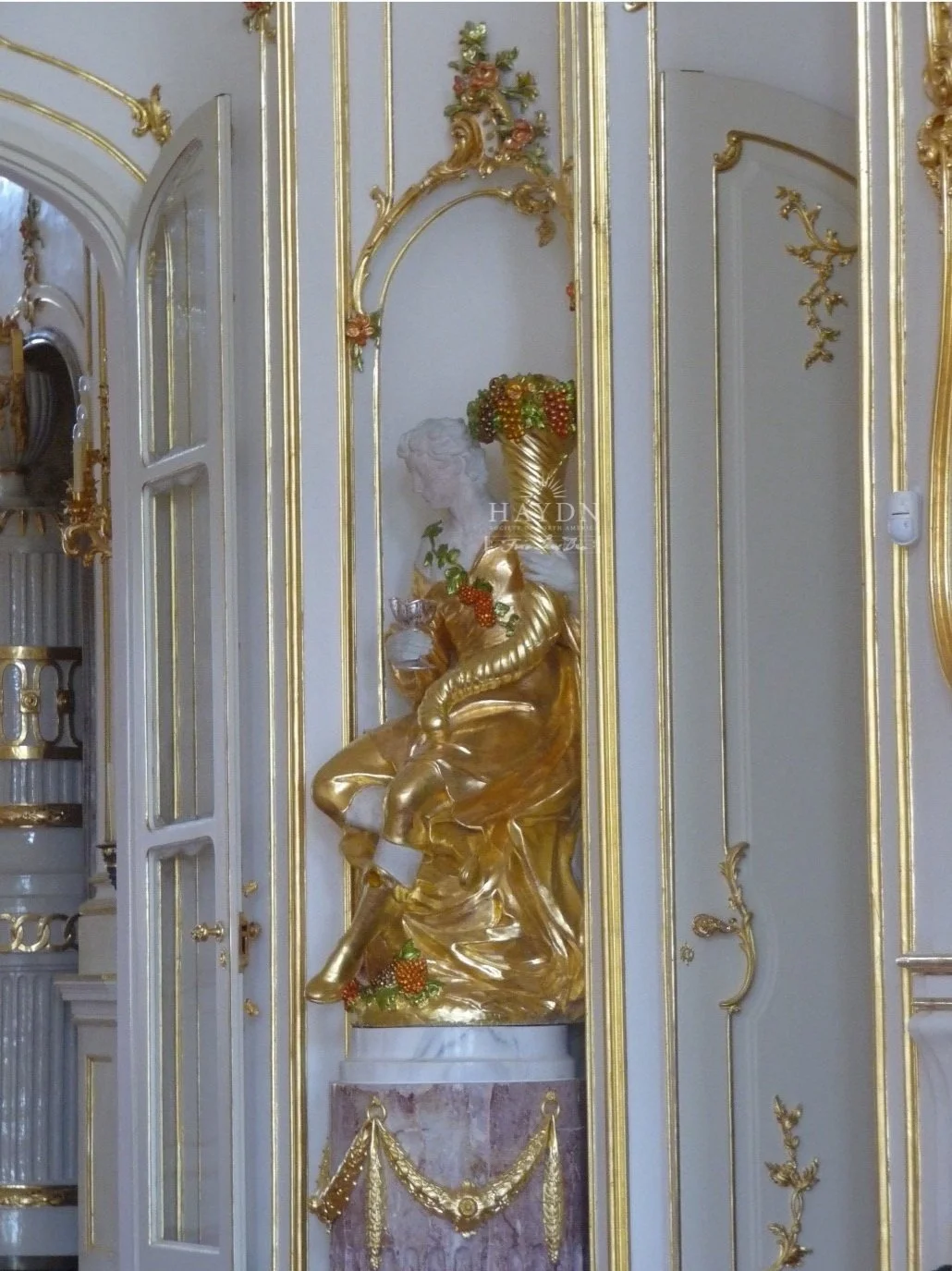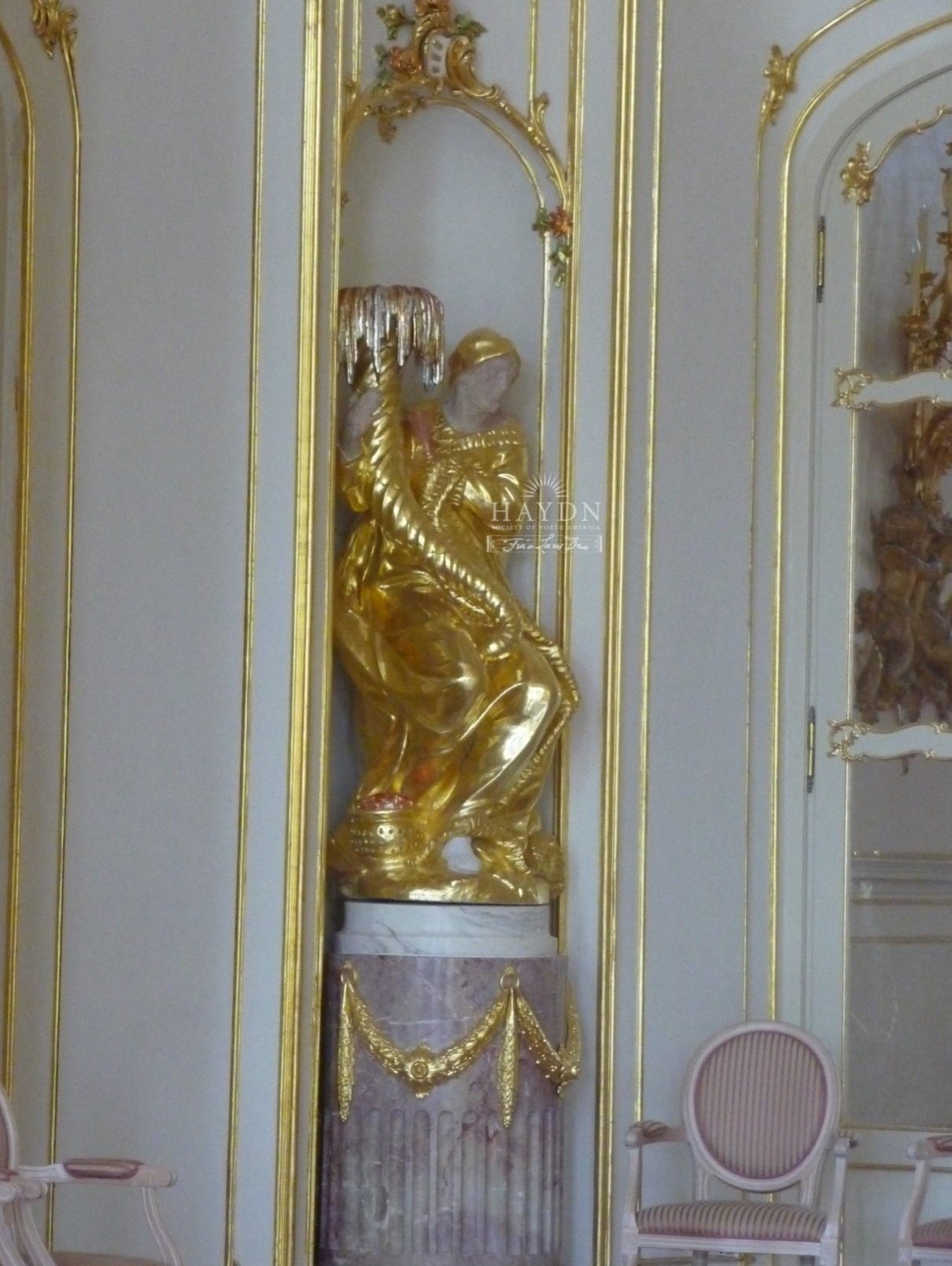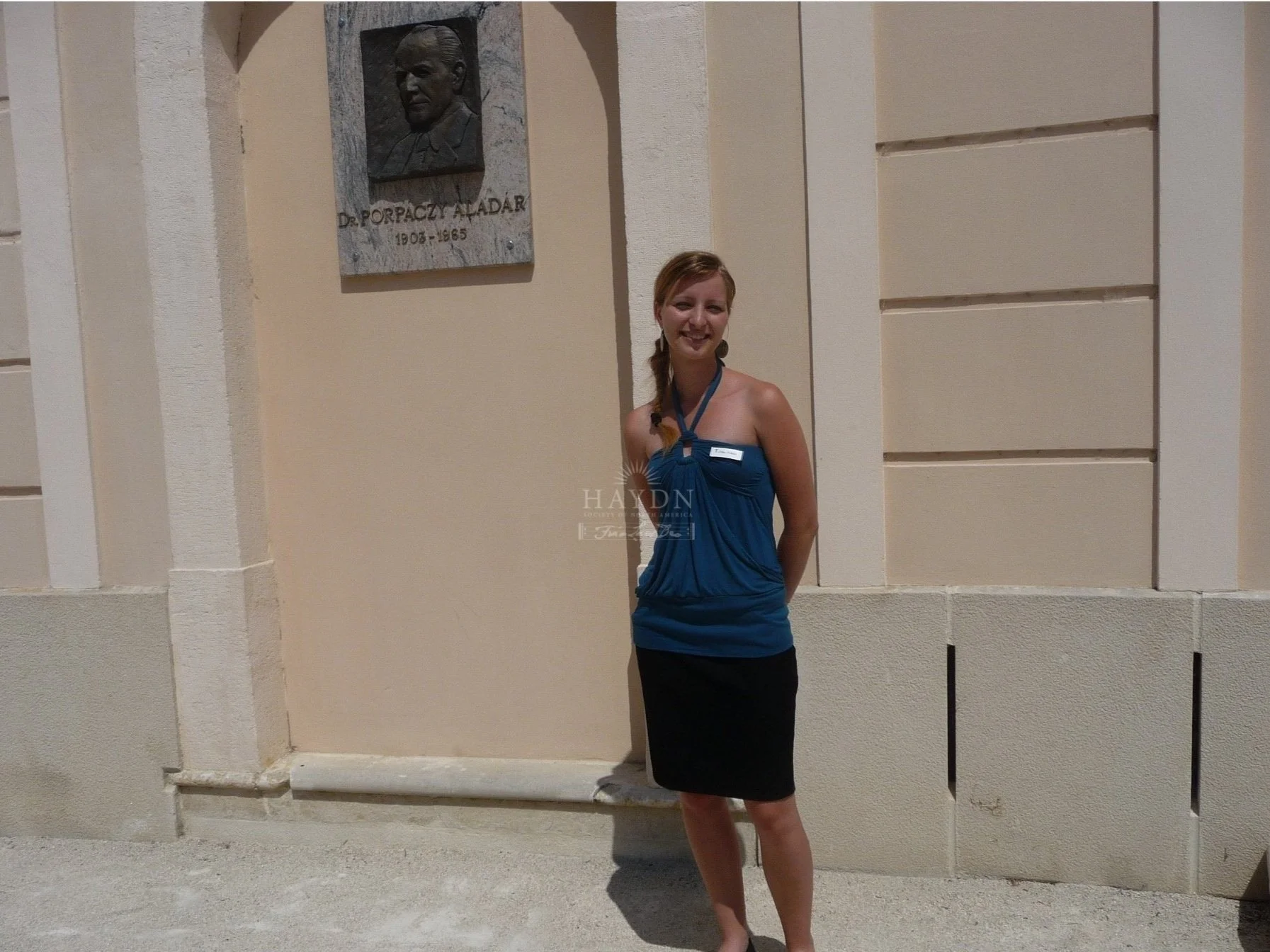In 2013, Haydn Society of North America board member, Suzanne Forsberg, traveled to Esterháza, the palace where Haydn spent much of his working life. The following is a recounting of Dr. Forsberg’s experience visiting the palace.
On October 18, 2022, Encounters with Eighteenth-Century Music, Series 2, No. 1, marked the 250th anniversary and first performance of Haydn’s “Farewell” Symphony as well as 30 years since the publication of James Webster’s monograph entitled Haydn’s “Farewell Symphony” and the Idea of Classical Style. The performance of Symphony No. 45 in F-Sharp Minor, the “Farewell,” took place in 1772 at Esterháza Palace in Fertöd, Hungary. On June 21, 2013, I had an opportunity to visit Esterháza Palace, albeit without hearing a concert of symphonies by Haydn (Image 1)! Image 2 shows cities and towns in the Holy Roman Empire (modern-day Austria, Hungary, and Slovakia) where Haydn spent most of his life, with Esterháza near the bottom of the map.
Image 1. Reproduction of an oil painting by Thomas Hardy (1791).
Image 2. Map (Wikipedia).
In 1761 Haydn became a member of the Esterházy princely court, appointed by Prince Paul II Anton, who died on March 18, 1762. His younger brother Prince Nicolaus I succeeded him (Image 3).
Image 3. Portrait of Nicolaus I in the palace at Eisenstadt (unknown painter). Photo © 2013 Suzanne Forsberg. All rights reserved.
Before becoming the reigning prince, he spent many months each year at a hunting lodge or small castle owned by the family at Süttör near Neusiedler See. Although it was a desolate place, in 1762 Nicolaus began construction of his new palace in this part of rural Hungary (now Fertöd). The small castle was incorporated into Esterháza Palace. Please join me on my trip to the palace.
From my hotel in Vienna, I traveled by taxi to the Hauptbahnhof. From there I took a train to the town of Pamhagen and waited two hours until another train came to transport me approximately five miles across the border to Fertöd, Hungary. The conductor told me where to walk to the palace. I did not look carefully at the street where I disembarked from the train—unfortunately. I took a long walk down the pleasant main drag of Fertöd. Finally, I reached the back entrance to the estate (Images 4 and 5).
Image 4. Back entrance to estate. Photo © 2013 Suzanne Forsberg. All rights reserved.
Image 5. Close-up of back entrance to estate. Photo © 2013 Suzanne Forsberg. All rights reserved.
This is the same route Haydn took to the palace each day; the musicians would have lived in separate quarters. I went through the gates to the back of the palace (Image 6) and admired sculptured trees and bushes (Image 7). Take note of the balcony and the rounded windows of the room in the center of the building. For comparison, here is a painting of the garden side of the palace painted in 1780 by Gaetano Pesci (Image 8). The palace was flanked by an opera house and a marionette theater.
Image 6. Back of palace. Photo © 2013 Suzanne Forsberg. All rights reserved.
Image 7. Palace garden. Photo © 2013 Suzanne Forsberg. All rights reserved.
Image 8. Painting of Esterháza Palace, Gaetano Pesci.
I circled around the palace until I came to the front, and there it was in all its glory (Image 9). Here are some close-ups of the façade and magnificent stairway (Images 10, 11, 12).
Image 9. Front of estate. Photo © 2013 Suzanne Forsberg. All rights reserved.
Image 10. Front stairway. Photo © 2013 Suzanne Forsberg. All rights reserved.
Image 11. Front stairway. Photo © 2013 Suzanne Forsberg. All rights reserved.
Image 12. Front stairway. Photo © 2013 Suzanne Forsberg. All rights reserved.
Finally, I entered Esterháza Palace, and the tour began. Prince Nicolaus greeted us near the entrance (Image 13). We walked through a beautiful hallway that led us to the spacious centrally located room seen through the glass doors (Image 14). For this visitor, the most moving and memorable part of the tour was the opportunity to step inside this elegant rococo room where the orchestra would have performed Haydn's symphonies, including presumably the "Farewell" (Images 15 and 16). Each corner has a statue depicting the four seasons (Images 17-20) The exquisite ceiling can be seen in Image 20. Before leaving the hall, I was able to peer out a window for views of the garden (Images 22-23).
Image 13. Entrance painting of Prince Nicholas.
Image 14. Hallway entrance. Photo © 2013 Suzanne Forsberg. All rights reserved.
Image 15. Inside the music room. Photo © 2013 Suzanne Forsberg. All rights reserved.
Image 17. “Spring” statue in music room. Photo © 2013 Suzanne Forsberg. All rights reserved.
Image 19. “Fall” statue. Photo © 2013 Suzanne Forsberg. All rights reserved.
Image 21. Music room ceiling. Photo © 2013 Suzanne Forsberg. All rights reserved.
Image 16. Inside the music room. Photo © 2013 Suzanne Forsberg. All rights reserved.
Image 18. “Summer” statue. Photo © 2013 Suzanne Forsberg. All rights reserved.
Image 20. “Winter” statue. Photo © 2013 Suzanne Forsberg. All rights reserved.
Image 22. Back garden from music room balcony. Photo © 2013 Suzanne Forsberg. All rights reserved.
Image 23. Back garden. Photo © 2013 Suzanne Forsberg. All rights reserved.
It is said there are 126 rooms in the palace, and we visited several. Finally, I said goodbye to our charming and knowledgeable guide (Image 24). I took a final photo of the palace before leaving through the rococo gate (Images 25, 26).
Image 24. Esterháza guide. Photo © 2013 Suzanne Forsberg. All rights reserved.
Image 25. Leaving the palace. Photo © 2013 Suzanne Forsberg. All rights reserved.
Image 26. Exiting the front gate. Stock image.
How did I lose my way back to the street—no train station here—where the little train let me off earlier that day? I was rescued by a kind young man who drove me back to Pamhagen. As the train made its way through the countryside, I sensed how the musicians must have felt when they wanted to leave the dampness and isolation of the palace and return to their families in Eisenstadt. This is what prompted Haydn to write his “Farewell” Symphony, where the musicians leave the stage two by two.


























